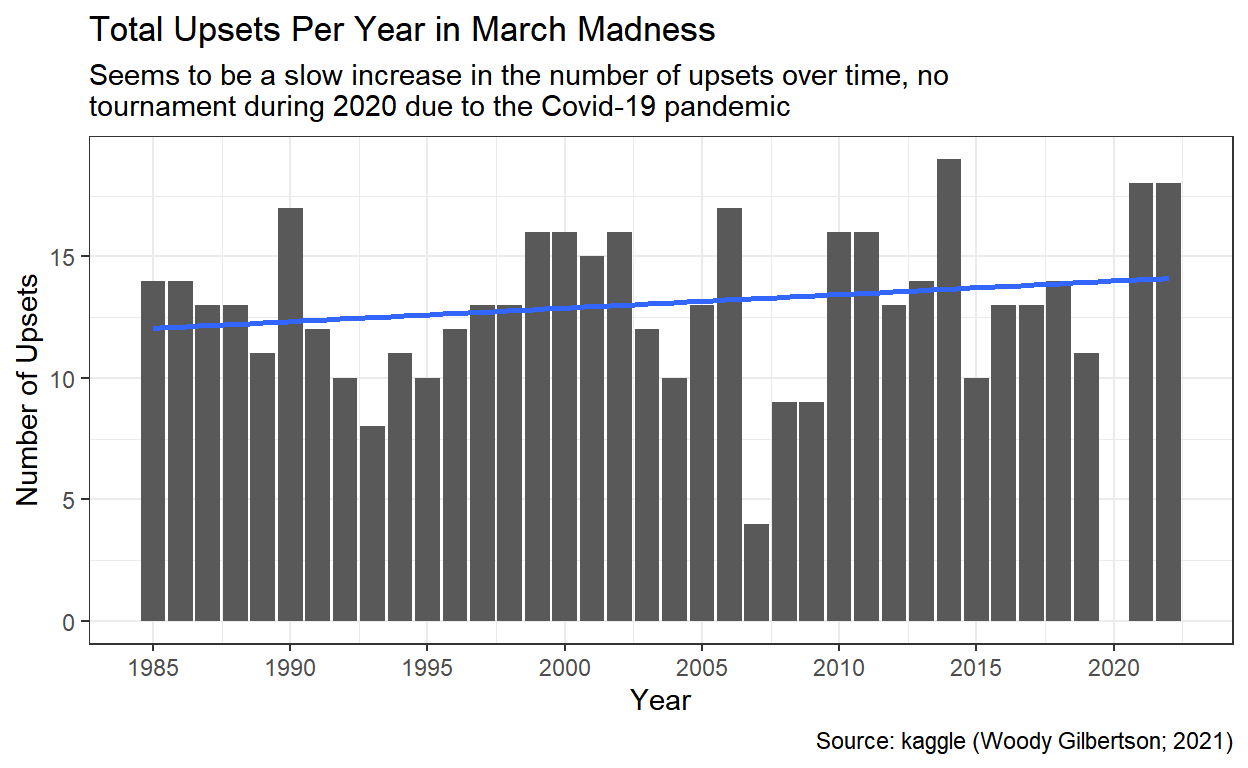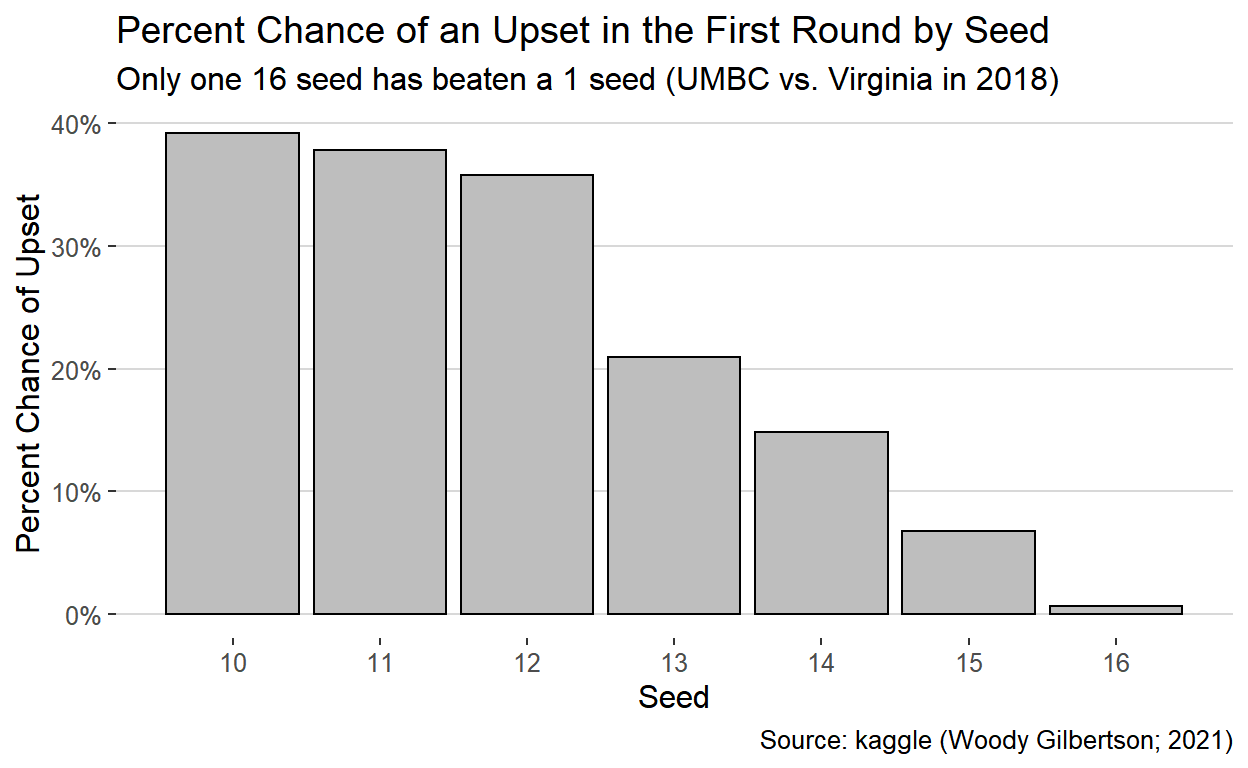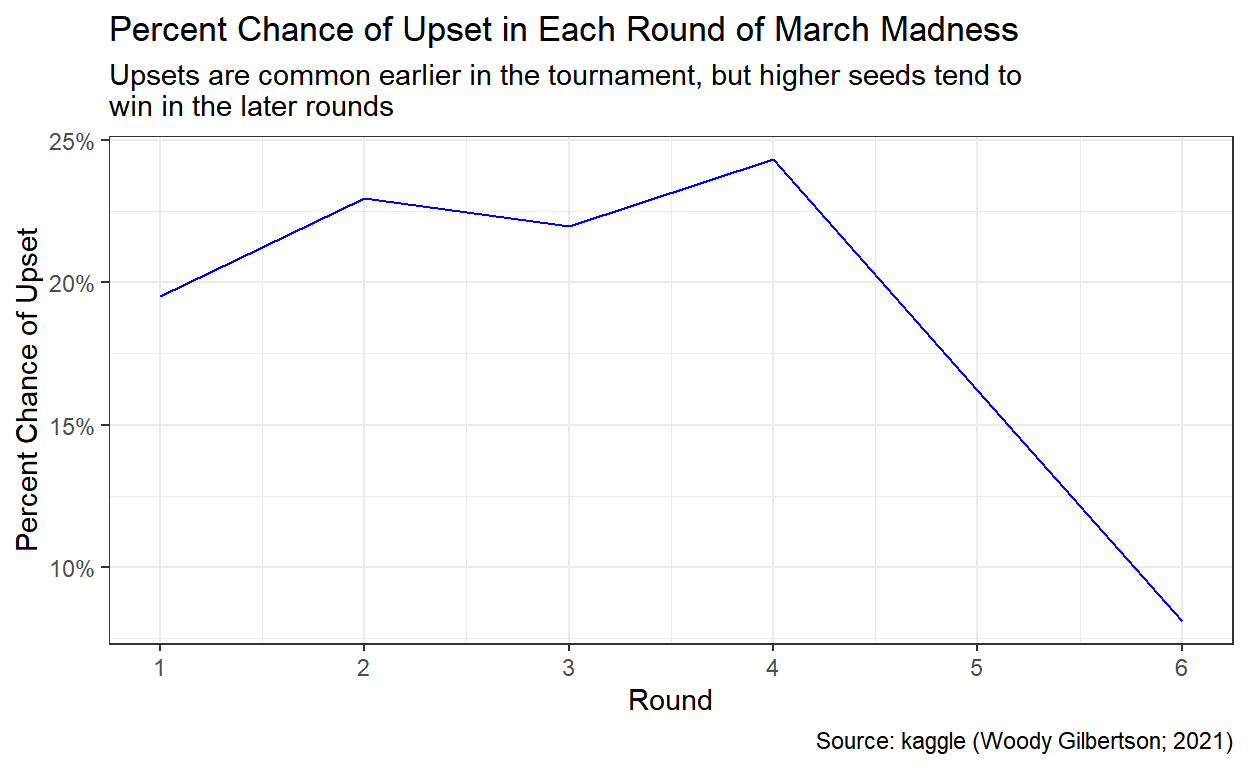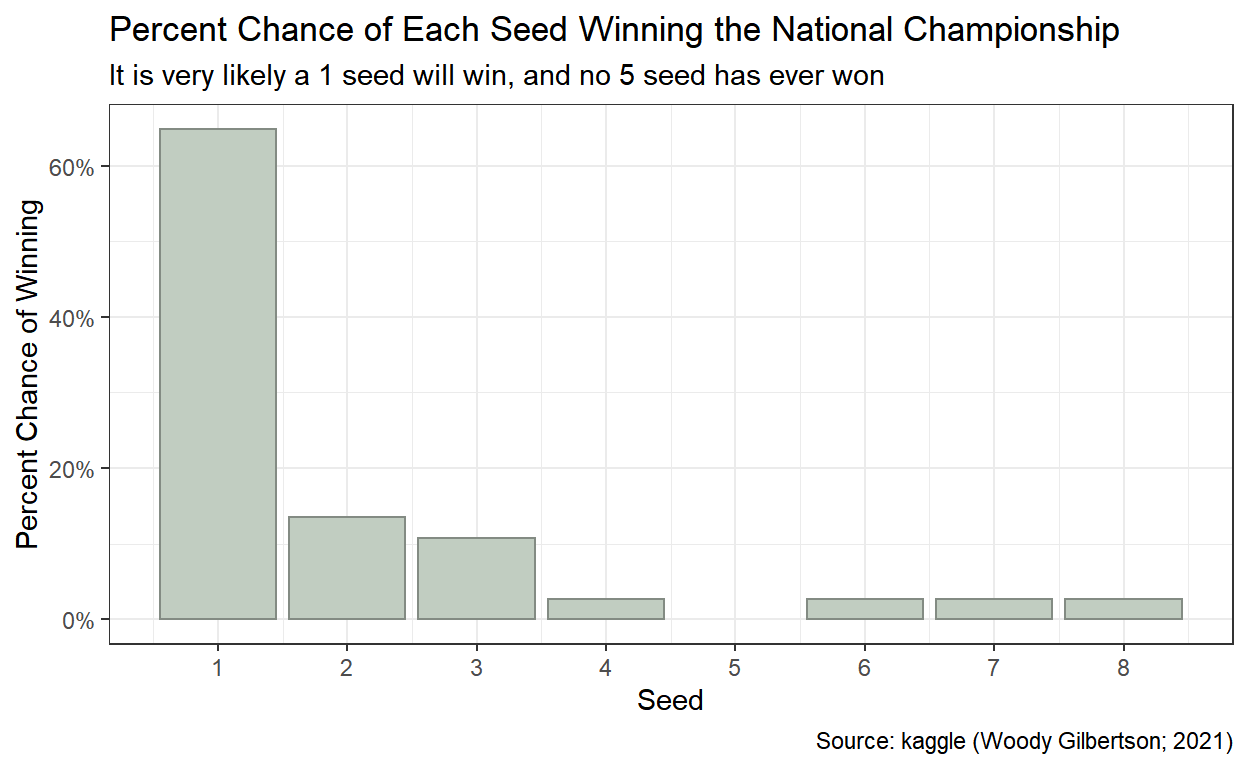What is March Madness?
March Madness is one of the largest sporting events in the world, featuring 64 college basketball teams. The 64 teams are split into four regions and seeded from 1-16, with 1 seeds being the best teams and 16 seeds being the worst teams.
How to Pick a Perfect Bracket
There are many factors that go into picking a great March Madness bracket, one of them being upsets. An upset is when the winning team is seeded 2 or more seeds higher than the losing team. For example, a 10 seed beating a 7 seed. The graph below shows the total upsets over time in March Madness.

Knowing how many upsets to pick will not help you unless you know what matchups to pick them in. The graph below shows the percent chance of an upset that each seed has in the first round of March Madness.

Now, you do not want to pick all of your upsets in the first round. The graph below shows the percent chance of an upset in each round of March Madness.

As shown in the graph, there are typically 6-7 upsets in the first round (Round of 64), 3-4 upsets in the second round (Round of 32), 2 upsets in the third round (Sweet 16), 1 upset in the fourth round (Elite 8), and no upsets in the Final Four or National Championship.
Another thing to consider in your bracket is what teams you pick to make the final four, as most bracket pools increase the amount of points awarded for correctly picking the winner of matchups in later rounds of the tournament. The graph below shows the percent chance of making the Final Four by seed.

Finally, the most important thing in March Madness is picking the winner, as most bracket pools come down to who can correctly pick the winner. The graph below shows the percent chance of different seeds winning the National Championship.
